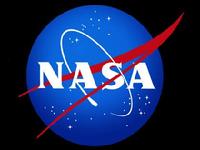|
|
Science & Technology - John Franklin
|
|
| The Eagle Has Landed
Neil Alden Armstrong - August 5, 1930 - August 25, 2012
Astronaut, United States Navy - 1st Man to Walk on the Moon
Malcolm Scott Carpenter - May 1, 1925 - October 10, 2013
Mercury 7 Astronaut
Yuri Alekseyevich Gagarin - March 9, 1934 - March 27, 1968
Cosmonaut, Soviet Air Force - 1st Human in Space
Edwin Powell Hubble - November 20, 1889 - September 28, 1953
Albert Einstein - March 14, 1879 - April 18, 1955
Developed the General Theory of Relativity
Also formula mass–energy equivalence E = mc2
Alexander Alexandrovich Friedmann - June 29, 1888 - September 16, 1925
Pioneering theory that the universe is expanding
Sir Isaac Newton - December 25, 1642 - March 20, 1727
Formulated the Laws of Motion and Universal
Max Karl Ernst Ludwig Planck - April 23, 1858 - October 4, 1947
Originator of Quantum Physics
|
|
Captain Gene Eugene Andrew Cernan
March 14, 1934 - January 16, 2017
the last human to walk on the Moon, in 1972
|
|
Major General
Valery Fyodorovich Bykovsky
August 2, 1934 - March 27, 2019
Cosmonaut Vostok 5, Soyuz 22, Soyuz 31
|
|
|
|
Stephen William Hawking
January 8, 1942 - 14 March 14, 2018
|
Author, Theoretical Physicist, Cosmologist
Professor of Mathematics
Director of research at the Centre for Theoretical Cosmology at the University of Cambridge
A Brief History of Time:
From the Big Bang to Black Holes
Hawking wrote this book for non-specialist readers with no prior knowledge of scientific theories on cosmology - the study of the universe, first published in 1988.
|
|
Quantum Mechanics -
Behavior and Interaction of Matter and Energy
General Relativity -
Gravity, Motion and Time
|
|
|
The Universe
By: John Franklin
Beyond our regular 88 constellation and planetary questions, we want to focus on Universal Questions.
So, what is the Universe?
Where did it come from? The Big Bang? String Theory? Inflation theory?
How did it start and will it end?
Many scientist believe that the Universe is expanding.
Where is it expanding to?
Is there more "space" out there for it to get bigger?
What is on the other side, if there is another side?
Will the Pioneer or Voyager Spacecrafts make Extraterrestrial Contact?
Is there Only 1 Universe?
More then 1 Universe?
Multiverses?
God? - Higher Power creation?
| |
|
|
|

Comet Hale–Bopp
Discovered on July 23, 1995, separately by
Astronomers Alan Hale and Thomas Bopp
Next Earth visit is July of 4385
|
| Pioneer 10 - Launched on March 2, 1972
The final signal was received on January 23, 2003.
A last attempt to contact was made on March 4, 2006.
The Pioneer 10 trajectory is heading in the direction of the star Aldebaran, in the Taurus constellation, traveling at 26,900 mph.
As of 2019, Pioneer 10 is about 120 AU from the Earth
Pioneer 11 - Launched on April 6, 1973
Last contact was on November 24, 1995, its signal became too faint to hear as of 2002.
The spacecraft is heading in the direction of the Scutum constellation, traveling at 25,150 mph.
As of 2019, Pioneer 11 is about 101 AU from the Earth.
|
|
|
Voyager 1 Spacecraft - Launched September 5, 1977, has exited the heliosphere, the sun's plasma influence and is on its way into interstellar space.
Finally, NASA has confirmed V1 has crossed over into Interstellar Space!
Voyager 2 Spacecraft was launched on August 20, 1977 in the opposite direction. We expect V2 to reach Interstellar Space in 2019 or early 2020.
Each Voyager Spacecraft carries a gold-plated audio-visual disc in the event that either spacecraft is ever found by other life-forms in the Universe. They are now more than 11 billion miles from Earth.
|
|
|
 |
| www.nasa.gov |
|
|
CAPE CANAVERAL, Florida - The space shuttle Atlantis returned from the International Space Station at 5:57 a.m. EDT on Thursday July 21, 2011.This 135th shuttle mission effectively ends NASA’s 30-year shuttle program.
|
|
Galaxy Explorer
By: John Franklin
I laugh at Pluto, which is in the picture to your right. I was pleased that it was down graded from its Planetary status to just a Dwarf Planet in 2006, then to a Plutoid in 2008!
While our Milky Way galaxy is about 100,000 light-years wide, and we are finding new dwarf planets and other satelites frequently that rival its size.
|
|
|
|
Making Planets
Planets are assembled by swirling disks of gas and dust called protoplanetary disks.
The disks form giant planets like Jupiter as well as smaller planets mostly between the class sizes of Earth and Neptune.After the rocky cores of planets are formed from smaller pieces, the gravity of the planets attracts hydrogen and helium gas.
Next, the planets are “baked” by a sun (starlight) and lose some gas.
At a certain mass threshold, planets retain the gas and become gaseous mini-Neptunes; below this threshold, the planets lose all their gas, becoming rocky Earth-like planets and super-Earths.
|
|
|
The surface of Mercury is made up of just one continental plate covering the entire planet. Its enormous iron core, estimated to be about 2,500 miles (4,040 km) across, leaves only 260 miles (420 km) for a mantle and crust — an extremely thin skin for the solar system's smallest planet which is shrinking.
The Earth's mantle is about 1,800 miles (2,900 km) thick, while the crust above it averages 25 miles (40 km) in thickness.
|
|
|
|
|
|
|
|
|
Mars - November 2018
Spacecraft - InSight - has arrived and is NASA's 8th successful landing at Mars since the 1976 Viking probes, and the first in 6 years
|
|